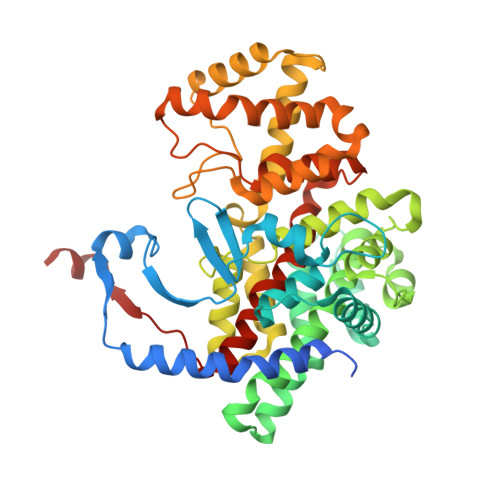Comparative studies of Aspergillus fumigatus 2-methylcitrate synthase and human citrate synthase.
Schlachter, C.R., Klapper, V., Radford, T., Chruszcz, M.(2019) Biol Chem 400: 1567-1581
- PubMed: 31141475
- DOI: https://doi.org/10.1515/hsz-2019-0106
- Primary Citation of Related Structures:
5UQO, 5UQQ, 5UQR, 5UQS, 5UQU, 5UZP, 5UZQ, 5UZR, 6BOL, 6BOM, 6BON, 6BOO, 6BOP - PubMed Abstract:
Aspergillus fumigatus is a ubiquitous fungus that is not only a problem in agriculture, but also in healthcare. Aspergillus fumigatus drug resistance is becoming more prominent which is mainly attributed to the widespread use of fungicides in agriculture. The fungi-specific 2-methylcitrate cycle is responsible for detoxifying propionyl-CoA, a toxic metabolite produced as the fungus breaks down proteins and amino acids. The enzyme responsible for this detoxification is 2-methylcitrate synthase (mcsA) and is a potential candidate for the design of new anti-fungals. However, mcsA is very similar in structure to human citrate synthase (hCS) and catalyzes the same reaction. Therefore, both enzymes were studied in parallel to provide foundations for design of mcsA-specific inhibitors. The first crystal structures of citrate synthase from humans and 2-methylcitrate synthase from A. fumigatus are reported. The determined structures capture various conformational states of the enzymes and several inhibitors were identified and characterized. Despite a significant homology, mcsA and hCS display pronounced differences in substrate specificity and cooperativity. Considering that the active sites of the enzymes are almost identical, the differences in reactions catalyzed by enzymes are caused by residues that are in the vicinity of the active site and influence conformational changes of the enzymes.
Organizational Affiliation:
Department of Chemistry and Biochemistry, University of South Carolina, Columbia, SC 29208, USA.















